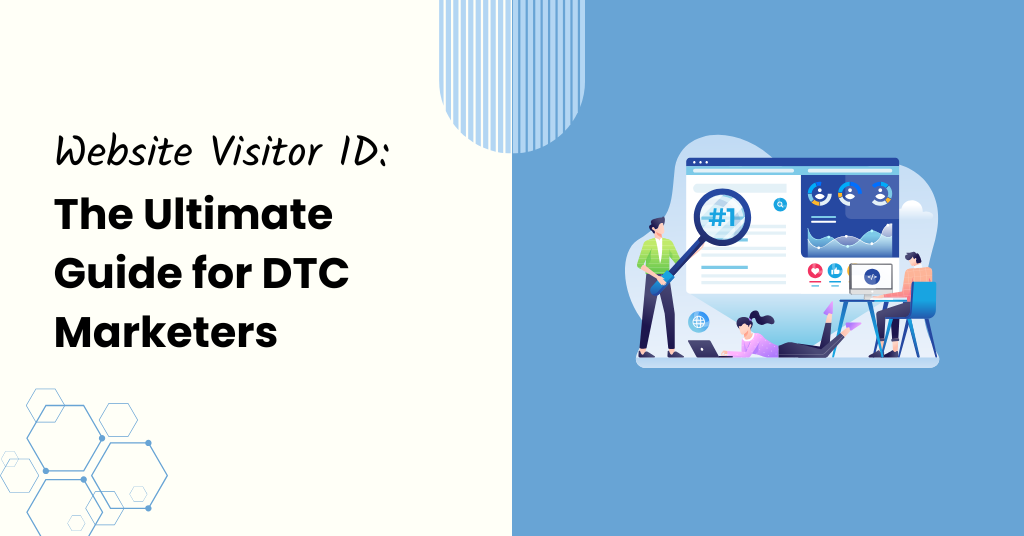Imagine this: It’s the height of holiday shopping season, your website is packed with eager shoppers, and your ads are crushing it. But for some reason, a chunk of those shoppers disappear, abandoning their carts and vanishing into the void, taking your potential sales with them. Ouch, right?
Now, here’s a crazy stat—more than 60% of marketers still aren’t using website visitor identification tools.
That’s a huge opportunity just slipping away!
Think about that: you could be turning those anonymous browsers into actual buyers, or at the very least, have the power to retarget them like a pro.
The good news?
You can fix this with the right website visitor ID tools. It’s like having x-ray vision for your site, revealing the real people behind those mystery clicks, and making sure they don’t leave without a friendly nudge to complete that checkout.
So, if you’re ready to stop leaving money on the table, let’s dive into how website visitor identification can turn your anonymous visitors into loyal, revenue-driving customers with “Website Visitor ID: The Ultimate Guide for DTC Marketers”.
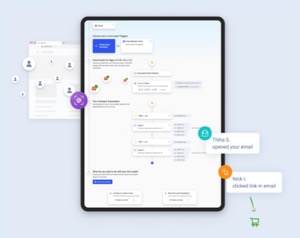
See Who Is On Your Site Right Now!
Get names, emails, phone numbers & more.
Try it Free, No Credit Card Required
What is Website Visitor ID?
To start, we have to answer the most basic question – what is website visitor ID?
Website visitor ID is the process of identifying and tracking anonymous visitors to your website by uncovering their contact details, such as names and email addresses, without them having to fill out a form.
In simpler terms, it’s identifying the unknown people checking out your site. You can finally see who’s browsing, even if they don’t give you their info.
Website visitor ID is also known by other names like anonymous visitor identification, visitor tracking, visitor recognition, lead identification, or identity resolution, but they all do the same thing—help you identify who’s interacting with your site.
Whether someone’s hopping between product pages, abandoning a cart, or just window shopping, visitor ID helps you reach out and say, “Hey, we noticed you’re interested. Let’s talk.”

How Website Visitor Identification Works
So, how does website visitor identification actually work?
Picture this: every visitor who lands on your site leaves behind digital breadcrumbs. These are things like their IP address, browsing behavior, and the pages they visit.
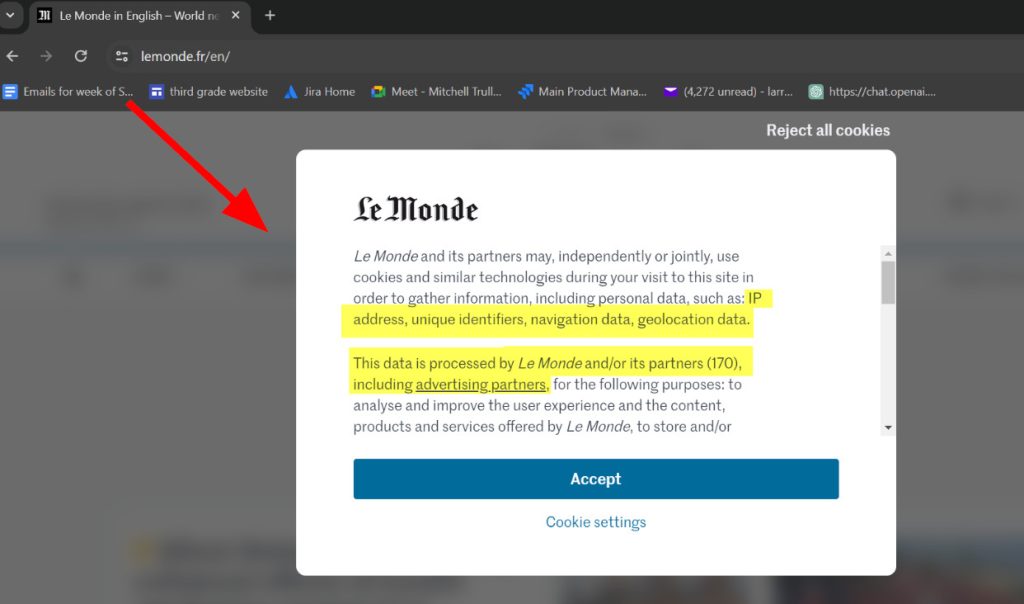
Website visitor ID tools scoop up those crumbs, combine them with third-party data, and—bam!—you’ve got yourself a profile.
The magic really happens when these tools connect the dots between anonymous data and real people.
By using cookies, tracking pixels, integrations with CRMs, and more, visitor ID tools can identify who’s on your site without needing them to fill out a form or sign in.

Once you’ve got that info, you can retarget them with personalized ads, add them to an email nurture flow, or just send a friendly “Hey, we saw you looking” message.
At the end of the day, you’re basically taking the guesswork out of marketing. Instead of wondering who that mystery shopper was, now you know—and you can use that knowledge to reconnect with them in ways that feel helpful and relevant, whether through targeted ads, email follow-ups, or personalized offers.

How to Identify Your Website Visitors
Knowing who’s visiting your website doesn’t have to be complicated. In fact, with Customers.ai, you can start identifying your website visitors in under 90 seconds with a single pixel.
No, seriously.
Here is how to identify your website visitors with Customers.ai.:
1. Sign up for a free account
If you don’t already have a Customers.ai account, sign up here (no credit card is required) and connect your business.
2. Install the x-ray pixel on your site
Installing the website identification x-ray pixel is easy and can be done through Tag Manager, Shopify, WordPress, and more
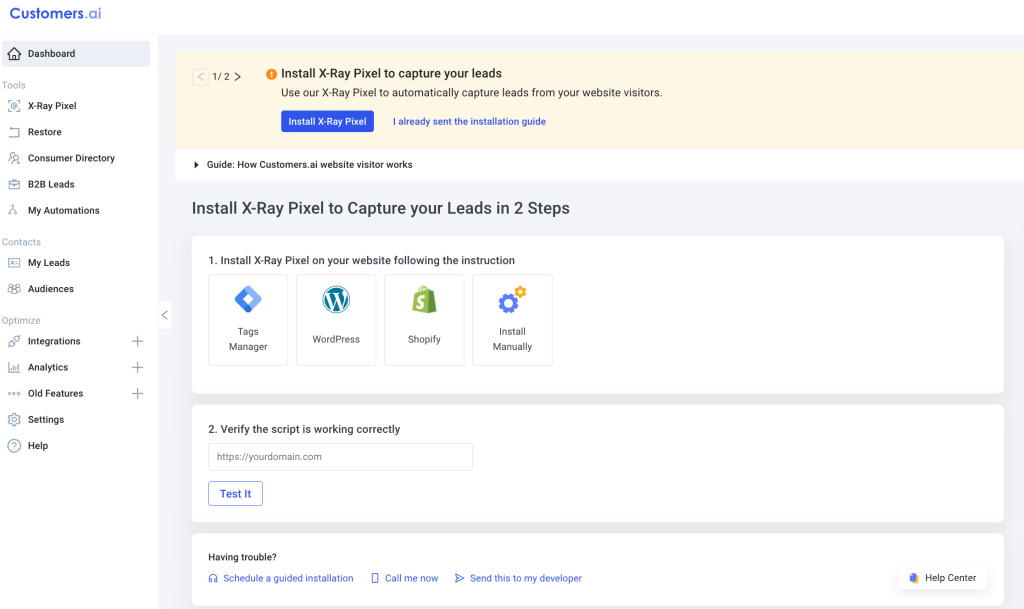
3. Verify the x-ray pixel is firing

4. Start identifying your website visitors
That’s it! Once the pixel is installed and verified, you can start identifying your website visitors.
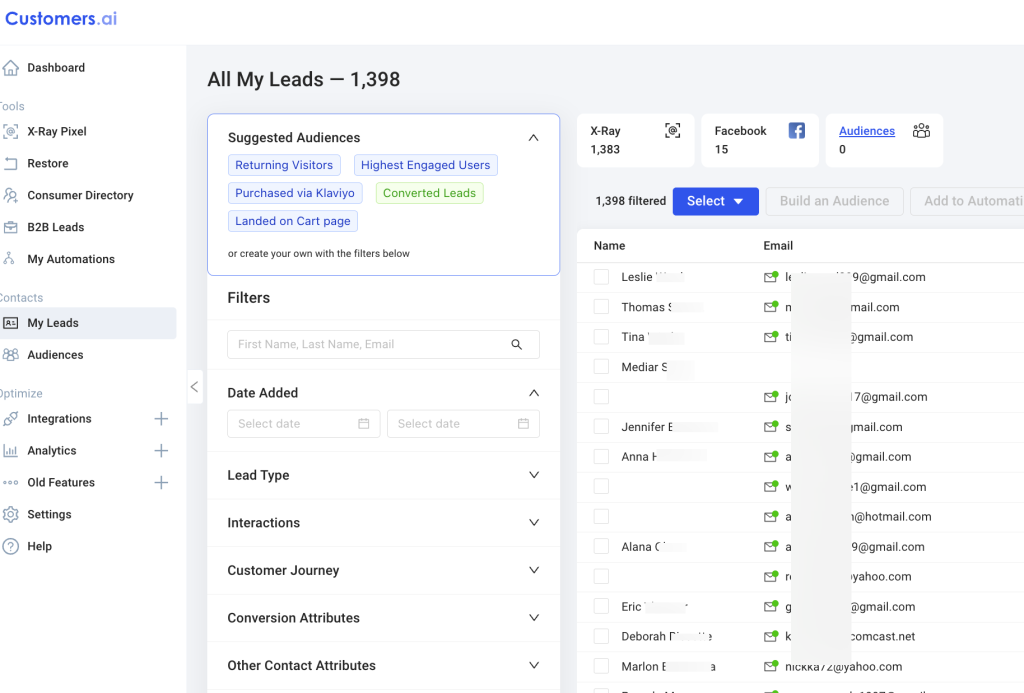
And with the highest capture rate in the industry, you should start seeing visitors immediately.

Benefits of Website Visitor Identification for Marketers
Why should you care about website visitor identification?
Simple—because it gives you the power to turn anonymous browsers into actionable leads, fine-tune your marketing, and ultimately grow your revenue. In fact, businesses that use visitor ID tools see up to a 50% improvement in lead generation and conversion rates.
Whether you’re trying to reduce cart abandonment, improve CLV, or just get more out of your existing traffic, knowing who’s on your site is a total game-changer.
Let’s break down exactly how this works and why it matters for your DTC business.
1. Improved Lead Generation
Website visitor ID tools allow you to capture contact details from anonymous visitors who otherwise might never convert. This means you don’t have to rely on waiting for customers to fill out forms to get their info—you can reach out to them proactively.
For DTC brands, this is a game changer because it opens the door to converting warm leads into paying customers, even if they only browse and leave.
2. Increased Conversion Rates
When you know who’s visiting your site and what they’re interested in, you can create targeted campaigns that feel more personalized. By delivering highly relevant offers or messaging, you can drive higher conversion rates from the same pool of traffic.
For example, a shopper who frequently views specific products can be nudged with tailored offers that speak directly to their needs, increasing the likelihood of a purchase.
3. Enhanced Customer Segmentation
Website visitor ID helps you sort visitors into different segments based on their behavior, enabling more effective marketing. Instead of blasting generic messages to your entire audience, you can deliver personalized content to different customer groups.
For DTC marketers, this means you can target high-value customers with exclusive offers, or re-engage lukewarm shoppers with strategic discounts.
4. Better Retargeting Opportunities
Visitor ID allows you to retarget the right people at the right time, using precise data about their behavior on your site. Whether they’ve abandoned a cart or browsed multiple products without purchasing, you can re-engage them with personalized ads or emails.
This means less wasted ad spend and higher chances of turning browsers into buyers, especially during peak shopping periods like Black Friday.
5. Insight into Visitor Behavior
Understanding how visitors engage with your site is crucial to optimizing your marketing efforts. Website visitor ID provides deep insights into which products or content visitors are interested in, where they drop off, and how often they return.
Armed with this information, DTC marketers can make smarter decisions about which products to promote or which pages need better conversion strategies.
6. Identification of High-Intent Visitors
Some visitors are ready to buy—they just need the right nudge. Visitor ID tools help you identify these high-intent visitors based on their interactions, like visiting multiple product pages or spending extended time on key areas of your site.
For example, a customer who has repeatedly viewed a specific product can be flagged for targeted follow-up, helping you capitalize on their strong purchase intent.
7. Reduced Shopping Cart Abandonment
Cart abandonment is a huge issue for DTC brands, but visitor ID tools can help minimize this problem. By identifying visitors before they leave your site, you can send timely reminders or follow-up emails to recover abandoned carts.
Offering a gentle nudge or incentive to return can turn an almost-lost sale into a successful conversion, saving your revenue from slipping through the cracks.
8. Increased Personalization in Marketing Efforts
Personalization is key in modern marketing, and visitor ID enables you to tailor your efforts based on individual visitor behavior. Rather than sending generic messages, you can craft personalized offers that match a visitor’s interests, increasing engagement and conversion.
For example, if someone is consistently browsing a specific category, you can send targeted offers for that category to encourage a purchase.
9. Ability to Track Return Visitors
It’s not just about identifying first-time visitors—tracking return visitors is equally valuable. Visitor ID tools can recognize when a person comes back to your site and personalize their experience based on their previous interactions.
For DTC brands, this means offering a returning shopper a tailored experience, such as showcasing recently viewed products or offering loyalty rewards.
10. Higher ROI on Marketing Campaigns
By using visitor ID to target the most relevant visitors with personalized offers and messaging, you can increase the effectiveness of your marketing spend.
Instead of wasting budget on broad, untargeted campaigns, you can focus your efforts on high-intent visitors who are more likely to convert. The result is a higher return on investment (ROI) for your campaigns, as you get more sales from the same or even smaller ad budgets.
Website visitor ID isn’t just about checking boxes—it’s about turning hidden opportunities into real results. Each benefit helps you fine-tune your strategy, making your marketing smarter, more personal, and more effective where it counts.

Types of Website Visitor ID Tools
When it comes to identifying who’s browsing your site, there’s more than one way to crack the code. Different tools offer different methods to uncover and track visitor information, each with its own strengths depending on what you’re looking for.
Here are the main types of website visitor ID tools you’ll come across:
1. Visitor Tracking
This is the most basic type, focused on tracking visitors’ actions and behaviors while they’re on your site. It helps you understand which pages they’re visiting, how long they’re staying, and where they’re dropping off.
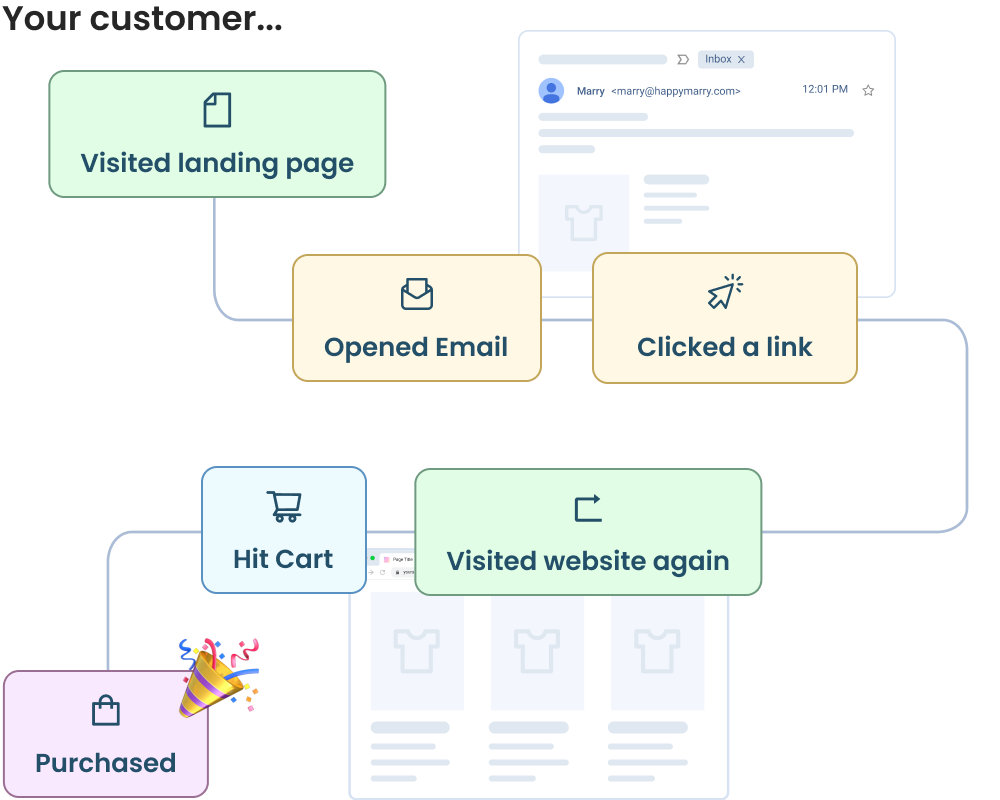
This type of tool gives you insights into overall visitor behavior patterns without necessarily identifying individuals.
2. Identity Resolution
While visitor ID focuses on tracking and identifying who is currently on your site, identity resolution goes a step further by connecting anonymous visitors to their full, real-world profiles across multiple data sources.
Visitor ID tools help you gather basic information like browsing behavior or contact details, but identity resolution works to match that anonymous activity with existing data—like social profiles, email addresses, or past purchase history.
The key difference between website visitor ID and identity resolution? Visitor ID tells you who’s on your site while identity resolution tells you everything about them, allowing you to create more personalized and targeted marketing strategies.
3. CRM Integration
Some visitor ID tools integrate directly with your CRM, allowing you to sync the data you capture on your website with your existing customer profiles.
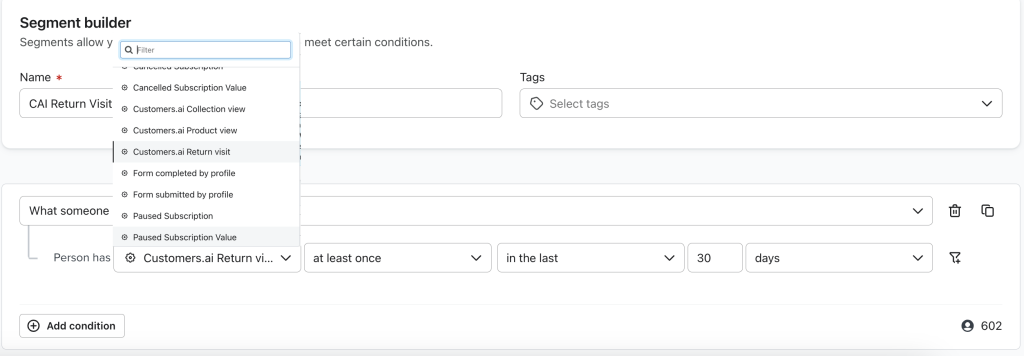
These tools go beyond simple visitor identification by syncing the data you capture on your website with your CRM, enriching existing customer profiles. This means you get a fuller picture of each visitor—like their behavior on your site, purchase history, and interactions with your marketing efforts—all in one place.
With this enhanced data, you can create more personalized campaigns, improve targeting, and make smarter decisions across your entire customer journey.
4. Behavioral Segmentation
These tools not only track visitors but also segment them based on their behaviors and interests. This allows you to create more targeted marketing campaigns based on what your visitors are most engaged with.
Whether it’s categorizing visitors who browse specific product pages or separating first-time visitors from return visitors, behavioral segmentation helps you refine your marketing approach.
5. Lead Capture Forms with Enhanced Tracking
While traditional lead capture forms require visitors to fill out their information, some tools go a step further by identifying visitors even before they complete a form.
These tools combine lead capture with advanced tracking to give you visibility into high-intent visitors who may not have submitted any data yet.
6. Heatmaps and Session Recordings
Although more commonly associated with UX and design, heatmaps and session recordings can also serve as a visitor ID tool.
By showing you exactly where visitors click, scroll, and engage on your site, these tools help you identify key areas of interest and spot high-intent actions, making it easier to prioritize follow-ups.
No matter how you approach it, there’s a website visitor ID tool to fit your strategy. Whether you’re focusing on tracking visitor behavior or identifying individual leads, the right tool can give you the insights you need to make smarter marketing decisions.
Remember – it’s all about knowing who’s on your site and how to turn that data into real results.

See Who Is On Your Site Right Now!
Get names, emails, phone numbers & more.
Try it Free, No Credit Card Required

How to Use Website Visitor ID to Boost Your Marketing Campaigns
Picture this: A shopper visits your site, checks out your latest fall collection, spends 15 minutes debating between two jackets, and then—poof!—they’re gone without buying.
But instead of letting that potential sale slip through your fingers, website visitor ID swoops in.
You’ve got the visitor’s info, and within hours, they receive a friendly, personalized email: “Still thinking about that jacket? Here’s 10% off to help you decide!” Two days later, that shopper is rocking your jacket and you’ve scored a sale.
That’s the power of website visitor ID, and it doesn’t stop there.
Let’s look at few other ways DTC marketers can use website visitor ID to boost marketing campaigns.
1. Turn Cart Abandoners into Buyers
We all know cart abandonment is the worst, but it doesn’t have to be a dead end. With website visitor ID, you can identify shoppers who ditch their carts and follow up with personalized emails or ads that remind them of what they left behind.
Example: A visitor adds three items to their cart from your fashion store but doesn’t check out. You identify them and send an email offering free shipping or a small discount if they complete the purchase within 24 hours.
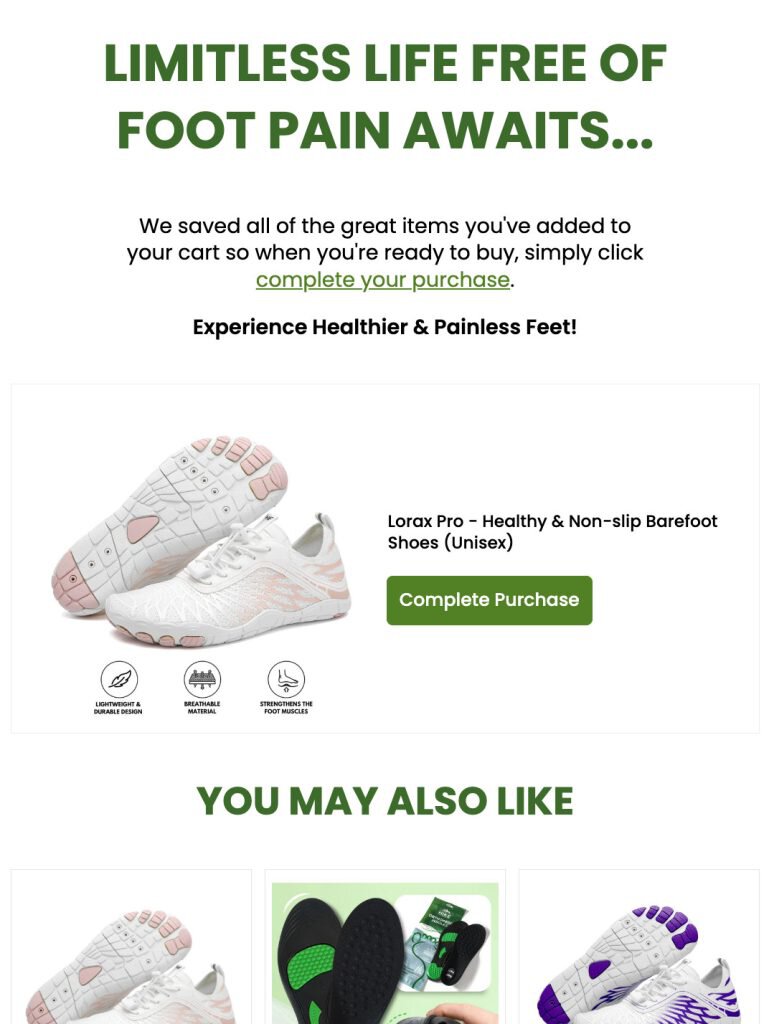
2. Create VIP Segments for High-Intent Visitors
Not all visitors are created equal—some are ready to buy, while others are just browsing. Use visitor ID to create a VIP segment of high-intent visitors based on their behavior, like visiting product pages multiple times or spending a lot of time on your site.
Example: You notice a repeat visitor who has checked out your high-end electronics multiple times. With visitor ID, you can place them in a VIP segment and send them a limited-time offer or an invite to an exclusive product launch.
3. Nurture Cold Leads with Personalized Follow-Ups
Visitor ID tools can help you revive those leads that cooled off over time. If someone visited your site but hasn’t engaged in a while, you can send them a personalized email or retarget them with ads tailored to their interests.
Example: A visitor browsed your outdoor gear store six months ago but never made a purchase. Now, with visitor ID, you can follow up with a personalized ad for the new camping gear they were eyeing, just in time for the upcoming summer season.

4. Build Hyper-Targeted Retargeting Ads
Forget generic retargeting ads—use visitor ID to deliver super specific ads that speak directly to what your visitors care about. Whether it’s the exact product they viewed or a related recommendation, personalized ads can do wonders for your ROI.
Example: Someone spent a lot of time looking at your skincare products but didn’t buy. You can create an ad campaign that showcases the exact products they viewed, along with a targeted offer like “Still thinking about [Product Name]? Here’s 10% off your first purchase!”
5. Enhance Post-Purchase Engagement
Visitor ID doesn’t just help before the sale—it can also boost your post-purchase efforts. Use the data you’ve gathered to engage your customers after they’ve made a purchase, whether it’s through tailored upsell campaigns or loyalty offers.
Example: After a customer buys a new laptop from your store, you use visitor ID data to recommend accessories like cases or headphones, sent via email in a personalized follow-up a few days later.

6. Segment Your Audience for Holiday Sales
With big shopping holidays like Black Friday and Cyber Monday on the horizon, visitor ID can help you slice and dice your audience to create targeted holiday campaigns. Segment your visitors based on what they’re most interested in, and hit them with offers that are too good to pass up.
Example: You notice a group of visitors who’ve been checking out your gift guides and holiday collections. Segment them into a special list and send them a preview of your Black Friday deals with early access or a personalized discount.
Website visitor ID gives you the tools to understand and engage with your audience in ways that feel personal and impactful. By using these insights creatively, you can turn more visitors into customers and see real results from your marketing efforts.

Best Practices for Implementing Website Visitor ID on Your Site
Getting the most out of website visitor ID isn’t just about plugging in a tool and walking away—it’s about having the right setup to actually use the data and turn it into actionable insights.
For DTC marketers, that means being equipped with the right ecommerce platform and having the systems in place to make those insights work for you.
Let’s dive into some key best practices to ensure you’re getting the most out of your website visitor ID setup.
1. Make Sure You’re Set Up as a True Ecommerce Store
To fully benefit from website visitor ID, you need more than just a basic site—you need to be running a full-fledged ecommerce store on platforms like Shopify or WooCommerce.
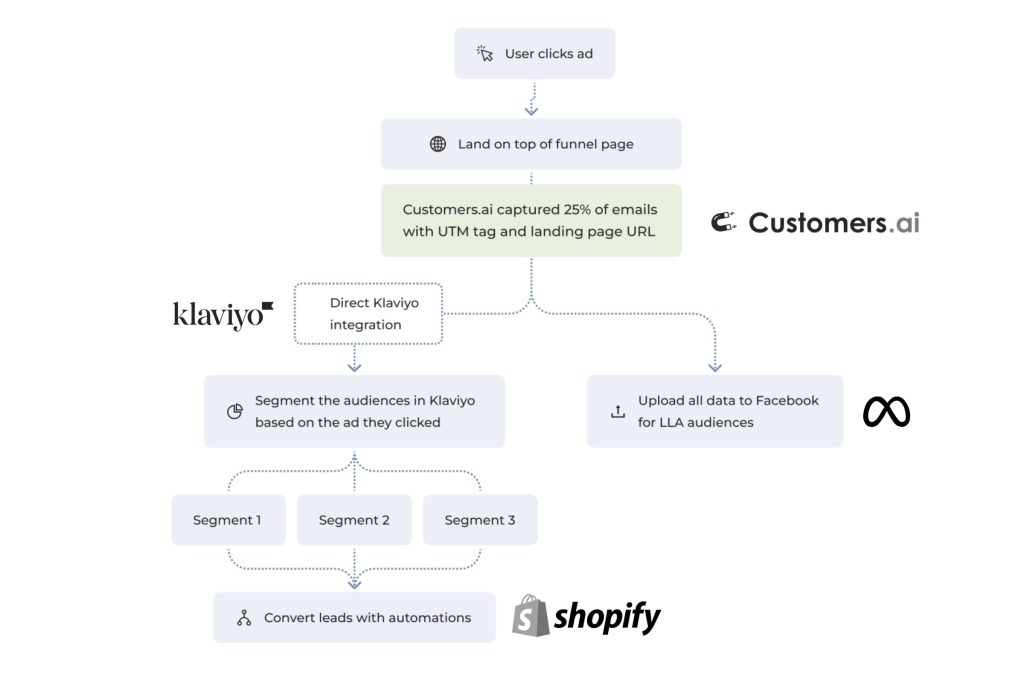
These platforms are designed for serious selling, with built-in tools and third-party apps that support advanced tracking, visitor identification, and seamless data capture. If you’re not yet using a robust ecommerce setup, it’s time to level up to unlock the full potential of visitor ID.
2. Integrate with a CRM for Better Data Management
Having website visitor ID is great, but if you’re not feeding that data into a CRM like Klaviyo, you’re missing out on deeper insights and more robust automations.
With a CRM in place, you can seamlessly move visitor data into advanced email flows, segment your audience based on behavior, and trigger personalized follow-ups that increase conversions.
3. Set Up Automated Email Flows
Visitor ID isn’t just about capturing data—it’s about using that data to act fast. Set up automated email flows that respond to specific visitor actions, like abandoned carts or product page views.
By using platforms like Klaviyo, you can create dynamic workflows that deliver personalized emails right when they matter most, helping to bring visitors back to complete their purchase.
Plus, with our Klaviyo integration, you can easily track revenue and ROI.

4. Prioritize High-Intent Visitors
Not every visitor is ready to buy, and that’s okay. Focus your efforts on high-intent visitors—those who spend time on product pages, add items to their carts, or return multiple times.
Use visitor ID data to segment these shoppers and target them with exclusive offers, limited-time discounts, or personalized recommendations that nudge them toward checkout.
5. Ensure Compliance with Privacy Regulations
Don’t forget the legal side of things! When implementing visitor ID, make sure your site complies with privacy regulations like GDPR or CCPA.
This includes having a clear privacy policy, allowing visitors to opt out of tracking, and ensuring data is collected transparently.
The best part about implementing website visitor ID? It’s not complicated. With the right tools already built into platforms like Shopify or WooCommerce, getting set up is a breeze.
And the benefits—like improved lead generation, personalized marketing, and higher conversion rates—are serious ROI drivers. It’s a simple setup with powerful results that can make a real difference to your bottom line.

Common Challenges with Website Visitor Identification and How to Overcome Them
Adding website visitor identification to your tech stack is pretty easy but just because you put the pixel on your site, doesn’t mean it will work right away. Like everything else, there are challenges you should be aware of.
Insufficient Website Traffic
Visitor ID tools really shine when you have a steady stream of visitors, ideally around 20,000 visitors per month or more. If your traffic is below that, you may not see the full benefit, as capture rates for visitor identification tools are around 20-30%. The more traffic you have, the more contacts you’ll capture.
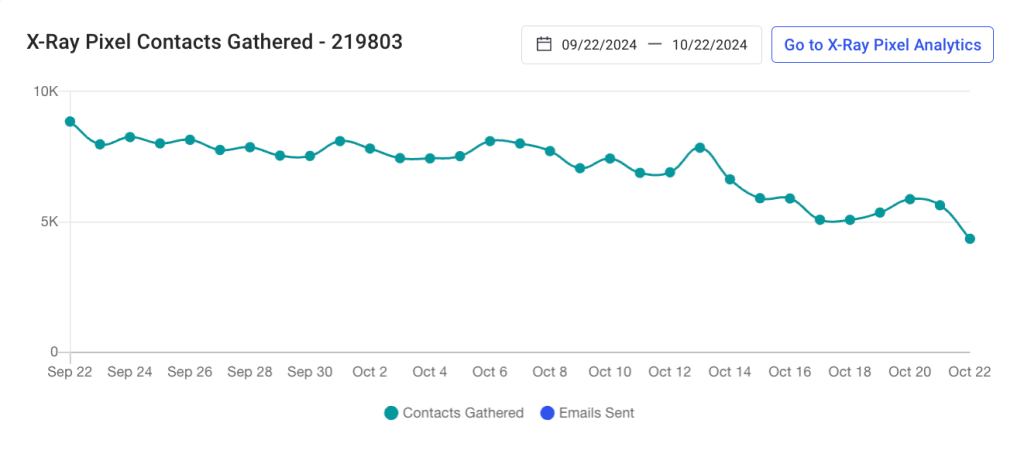
How to overcome it: Focus on building your traffic first by ramping up your marketing efforts—through paid ads, SEO, or social media campaigns. Once you hit that threshold, visitor ID will become much more valuable as you’ll have a larger pool of data to leverage.
Lack of Infrastructure
Having website visitor ID tools is one thing, but if your overall infrastructure isn’t set up to use the data, you’re missing out. This includes everything from the right ecommerce platform to CRM systems and marketing automations.
How to overcome it: Make sure you have the right foundation in place, starting with a solid ecommerce platform like Shopify or WooCommerce. From there, integrate visitor ID with a CRM like Klaviyo to make the most of the data you collect, so you can automatically act on it through personalized email flows and customer segmentation.
Lack of a Dedicated Team to Utilize Data
Even if you’ve got the tools and infrastructure, it can be tough to see the benefits if you don’t have a team ready to manage the data and make it actionable. Without the right team, visitor ID data can sit unused, collecting dust.
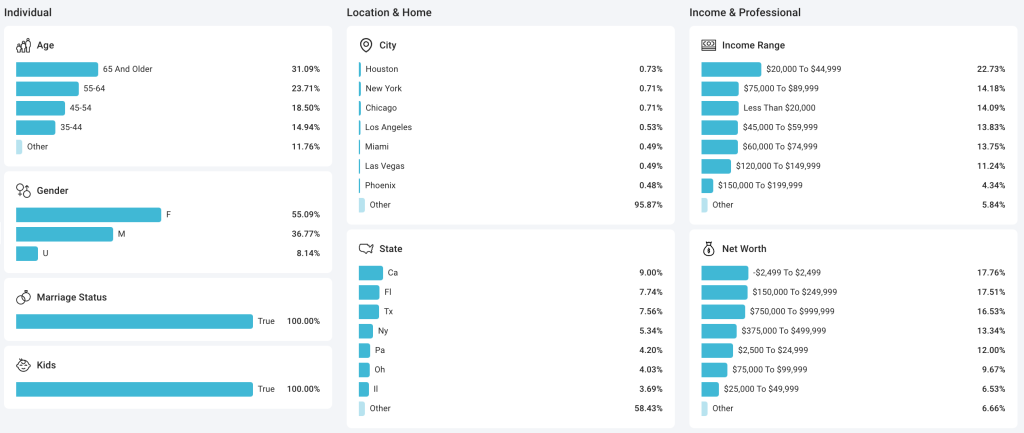
How to overcome it: You don’t need a massive team, but having at least one dedicated person or small team to oversee your visitor ID efforts can make all the difference. Consider outsourcing tasks like data analysis or campaign setup if you don’t have the in-house resources.
Difficulty Interpreting Data
Collecting visitor data is one thing, but making sense of it can be tricky. If you’re not sure how to interpret the data, you may struggle to use it effectively in your campaigns.
How to overcome it: Start simple. Focus on key metrics like identifying high-intent visitors or tracking cart abandonment. Many visitor ID tools also offer easy-to-understand dashboards, so take advantage of those features and gradually dig deeper into the data as your team gets more comfortable.
Privacy Concerns and Compliance
With privacy regulations like GDPR and CCPA, it’s important to ensure that you’re using visitor ID tools in a compliant manner. Collecting data without consent or bombarding visitors with irrelevant marketing can not only lead to legal trouble but also harm your brand’s reputation.
How to overcome it: Make sure your site has clear opt-in options and a transparent privacy policy. Use compliant tools like Customers.ai that respect user consent, and always provide an easy way for visitors to opt out of data tracking. Most importantly – don’t be a spammer!
Website visitor ID is an awesome tool, but like anything, it comes with its own set of challenges.
The good news? Most of them are totally manageable.
Whether it’s building up your traffic, getting your team ready, or making sure you’re not spamming your visitors, once you’ve got a handle on these, you’re all set to start turning your visitor data into real marketing wins.

Legal Considerations for Using Website Visitor Identification
When it comes to using website visitor identification, staying compliant with privacy regulations is key. But don’t worry—it’s not as intimidating as it sounds. As long as you’re transparent with your visitors and follow basic data privacy guidelines, you can gather the insights you need without crossing any lines.
First off, make sure your site is in line with major regulations like GDPR and CCPA. These laws require that visitors are informed about what data you’re collecting and why, and they must have the option to opt out of tracking. Including a clear privacy policy and consent forms is an easy way to stay compliant while maintaining trust with your visitors.
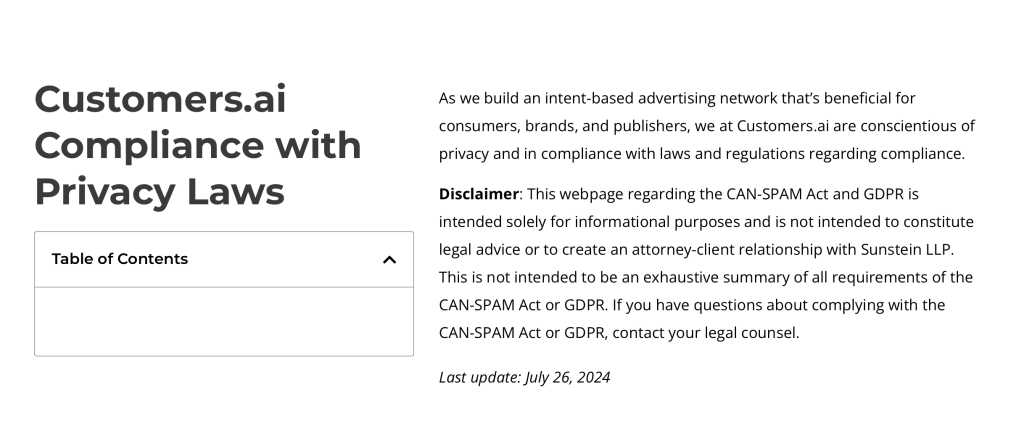
It’s also important to remember that visitor ID data should be used thoughtfully. Instead of overwhelming visitors with constant follow-ups, focus on providing relevant, personalized experiences that build a positive relationship with your audience.
For more detailed information on staying compliant, check out our full privacy compliance guide. Following these guidelines ensures you’re using visitor data responsibly while continuing to drive the results your business needs.

Future Trends in Website Visitor ID Technology
There are a few key areas we’re excited about when it comes to the future of website visitor ID tech:
- First-Party Data
- Ai-Powered Insights
- Multi-Channel Marketing Platform Integration
- Privacy-First Identification Techniques
First up, first-party data is becoming more important than ever. With third-party cookies on their way out, businesses are focusing on the data they collect directly from customers. The upside? First-party data is not only more accurate but also helps build better relationships with your customers because it’s based on trust and consent.
Then there’s AI-powered insights. Visitor ID tools are getting smarter, using AI to predict visitor behavior and help you deliver personalized experiences at scale. Imagine knowing not just who’s browsing but what they’re likely to buy next—AI is making that possible.
We’re also seeing more emphasis on multi-channel marketing platform integration. Tracking visitors across various channels—whether they’re interacting with your emails, ads, or website—is becoming easier and more streamlined. This kind of integration ensures you can deliver a seamless experience no matter where your customers are engaging with your brand.
Finally, privacy-first identification techniques are critical. With privacy regulations tightening, it’s essential to use tools that respect user consent while still giving you the insights you need. Expect more transparency and a bigger focus on making sure your data collection practices are compliant and trust-building.
The future of website visitor ID is all about smarter, more personalized marketing—powered by first-party data, AI, and multi-channel integration—while keeping privacy front and center.

Case Studies: Success Stories of Using Website Visitor ID
Seeing how website visitor ID plays out in real businesses can be a game-changer. Here are a few success stories that shows just how powerful this technology can be in boosting marketing campaigns and driving results.
Harvest Hosts: Boosting Conversions by Identifying Key Visitors
Harvest Hosts, a membership club for RV enthusiasts, saw incredible results after implementing website visitor ID. By identifying high-intent visitors and personalizing their marketing efforts, Harvest Hosts was able to significantly improve conversions.
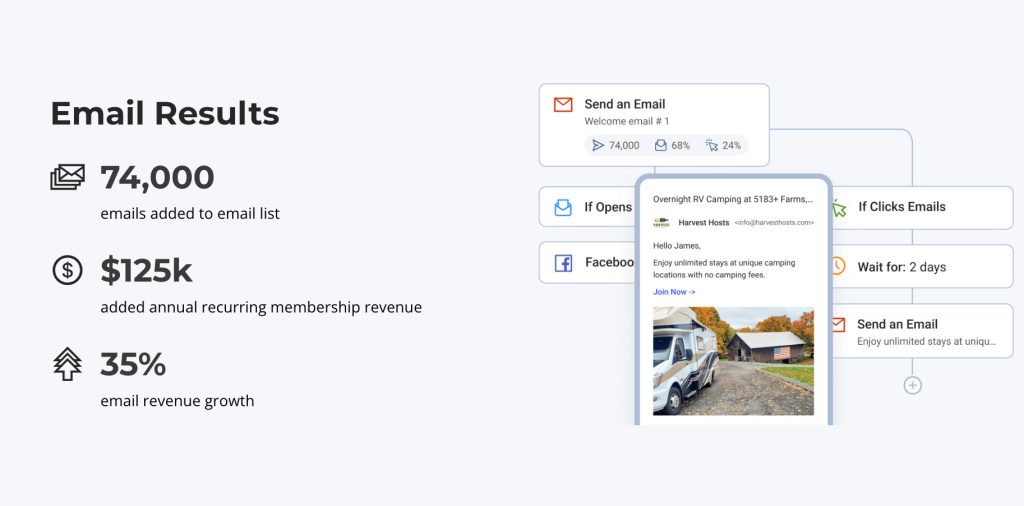
Instead of relying on guesswork, they knew exactly who was visiting their site, allowing them to target these visitors with personalized follow-ups and offers. The result? A 15% boost in conversions that translated into a major win for their marketing efforts.
Agile Off Road: Turning Traffic into Sales with Better Visitor Insights
Agile Off Road specializes in custom upgrades for adventure vehicles, and they faced the challenge of converting their growing traffic into actual sales. After adopting website visitor ID, they were able to pinpoint which visitors were the most engaged and ready to buy.
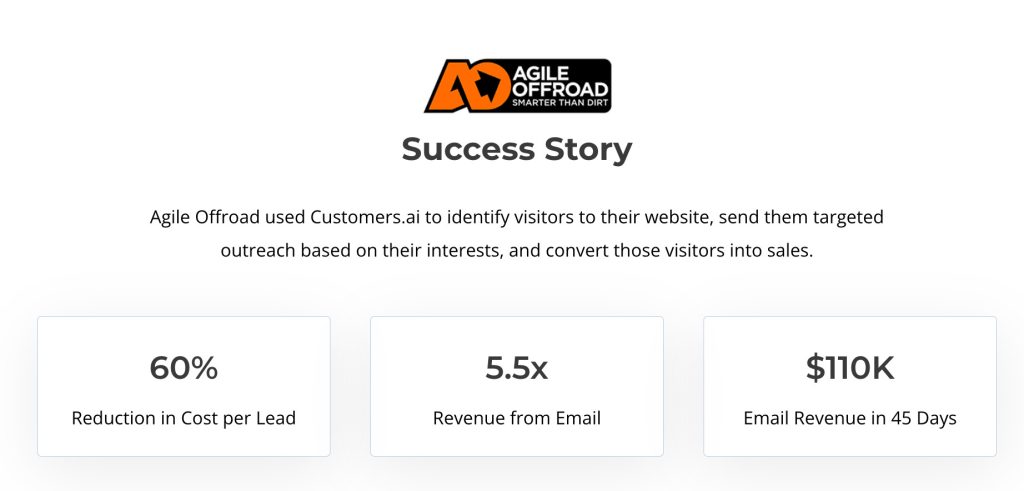
With this insight, they tailored their retargeting campaigns to speak directly to those visitors’ interests and needs. The results were impressive—Agile Off Road saw a significant uptick in sales and engagement, proving that understanding who’s on your site makes all the difference.
Mailer Profit Agency: Making Lead Generation More Efficient
Mailer Profit Agency, a digital marketing agency, used website visitor ID to streamline its lead generation process. By identifying and tracking visitors across their site, they were able to segment their audience more effectively and reach out with highly targeted offers.
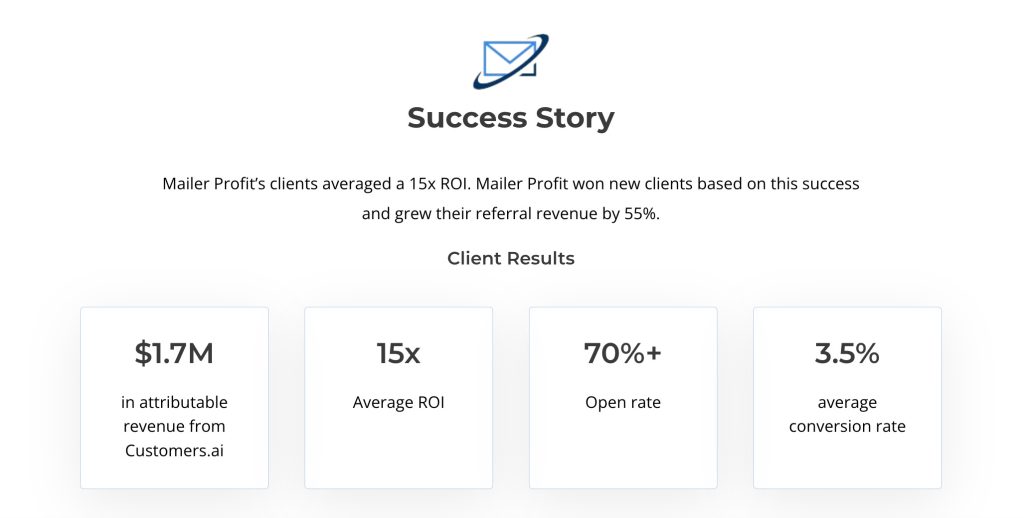
This approach not only improved their lead generation but also helped them build stronger relationships with potential clients. Their ability to identify exactly who was visiting their site led to a 20% increase in qualified leads, making visitor ID an essential part of their strategy.
These stories show how powerful website visitor ID can be when put to good use. From turning visitors into customers to making lead generation easier, it’s clear that understanding who’s on your site makes a big difference.
And the best part? This is just the beginning. With the right tools, you can take these same strategies and make them work for your business.
Website Visitor ID & DTC Marketers
For DTC marketers, website visitor ID isn’t just a “nice-to-have”—it’s a must-have. In fact, with over 68% of marketers reporting better lead quality from using visitor identification tools, it’s clear this technology is the real deal.
So, whether you’re looking to lower cart abandonment, boost conversions, or simply understand your audience better, website visitor ID gives you the tools to do it.
And the best part? It’s not complicated!
Once you’ve got the right setup in place, you’ll be turning anonymous visitors into customers without breaking a sweat.
It’s time to make those invisible visitors visible—and start turning clicks into conversions.
Sign up for your free trial of Customers.ai today and capture 500 visitors today!

See Who Is On Your Site Right Now!
Get names, emails, phone numbers & more.
Try it Free, No Credit Card Required
Website Visitor ID FAQs
If the guide wasn’t helpful enough, we’ve also generated some common questions about website visitor ID:
Why is website visitor identification important for DTC marketers?
Website visitor ID helps DTC marketers capture valuable customer information, improve targeting, and increase conversions by turning anonymous visitors into actionable leads.
What are the benefits of using website visitor ID tools?
The benefits include improved lead generation, higher conversion rates, better customer segmentation, more effective retargeting, and enhanced personalization.
How can website visitor ID help increase conversion rates?
Website visitor ID identifies high-intent visitors, allowing marketers to create personalized offers or retarget them with relevant ads, increasing the likelihood of conversions.
What’s the difference between website visitor ID and identity resolution?
Visitor ID tracks anonymous visitors, while identity resolution goes a step further by matching those visitors with complete profiles from multiple data sources.
Can website visitor ID tools track anonymous visitors?
Yes, website visitor ID tools can track anonymous visitors by collecting data like IP addresses or behaviors and matching it with identifiable information.
How does website visitor ID improve lead generation?
Website visitor ID tools capture the details of anonymous visitors, allowing marketers to follow up with them as leads without waiting for form submissions.
What types of website visitor ID tools are available?
Types include visitor tracking, identity resolution, CRM integrations, behavioral segmentation tools, and lead capture forms with enhanced tracking.
How does visitor identification integrate with CRM platforms like Klaviyo?
Visitor ID tools sync data directly with CRM platforms like Klaviyo, enriching customer profiles and automating follow-up marketing flows based on visitor behavior.
Can website visitor ID be used for retargeting campaigns?
Yes, website visitor ID tools help identify visitors for retargeting campaigns by tracking their behavior and matching them with identifiable profiles for personalized ads.
What are the challenges of implementing website visitor ID?
Common challenges include low website traffic, lack of infrastructure, and not having the resources to effectively manage and act on the data.
What’s the role of first-party data in website visitor ID?
First-party data is crucial in website visitor ID because it’s collected directly from visitors, providing more accurate and reliable insights compared to third-party data.
How can website visitor ID tools help with cart abandonment?
Visitor ID tools identify visitors who abandon their carts, enabling marketers to follow up with personalized emails or retargeting ads to recover lost sales.
What are the best practices for implementing website visitor ID?
Best practices include using a robust ecommerce platform, integrating with a CRM like Klaviyo, setting up automated email flows, focusing on high-intent visitors, and ensuring privacy compliance.
How can website visitor ID help with holiday sales?
Visitor ID helps DTC marketers segment high-intent holiday shoppers, personalize offers, and run targeted retargeting campaigns, increasing conversion rates during peak shopping seasons.
Are website visitor ID tools compliant with privacy regulations?
Yes, as long as they follow regulations like GDPR and CCPA by providing clear consent options and offering visitors the ability to opt out of data tracking.
What is the future of website visitor ID technology?
The future of visitor ID includes increased reliance on first-party data, AI-powered insights, better multi-channel integration, and a stronger focus on privacy and compliance.
How can website visitor ID improve customer segmentation?
Visitor ID tools track visitor behavior, allowing marketers to create more refined segments based on interests, purchase intent, or actions taken on the site.
Can website visitor ID tools integrate across multiple marketing channels?
Yes, many visitor ID tools integrate across multiple channels like email, ads, and social media, providing a unified view of visitor interactions for a seamless marketing experience.
Related Content
- How to Identify Anonymous Website Visitors: A Marketer’s Guide
- What Features Should You Look for in Website Visitor Identification Software?
- Maximize Klaviyo Performance with Website Visitor Identification
- How to Capture Bounces with Website Visitor Identification
- How to Turn Anonymous Visitors into Loyal Customers with Website Visitor Identification
- How to Capture Emails from Your Website Visitors
